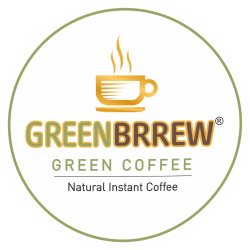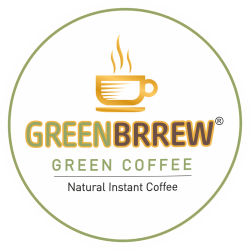Understanding Natural Caffeine: Key Indicators in Coffee
Natural caffeine is the type of caffeine found naturally occurring in plants. It's the stimulant that gives you that energy boost when you drink coffee or tea.
| Coffee beans, Espresso, filtered coffee, and even decaf coffee contain small amounts. |  |
 |
Tea leaves, Black, green, oolong, white teas, matcha, and yerba mate. |
| Cocoa beans, Chocolate, hot chocolate, and chocolate milk. |  |
 |
Guarana berries are found in energy drinks and supplements. |
Note: while natural caffeine comes from plants, it's chemically identical to synthetic caffeine. The main differentiator lies in the extraction process and potential accompanying compounds.
Coffee, the beloved brew that fuels millions worldwide, is renowned for its caffeine content. But what exactly determines the caffeine levels in your cup?
Top 10 indicators that influence the natural caffeine content in coffee:
1. Coffee Bean Species
- Arabica vs. Robusta: Arabica beans generally contain less caffeine than Robusta beans. This difference in caffeine content is attributed to the inherent genetic makeup of these two coffee species.
2. Bean Growing Altitude
- Higher Altitude and Less Caffeine: Coffee plants cultivated at higher altitudes tend to mature slower due to colder temperatures. This slower growth rate often results in beans with lower caffeine content.
3. Roast Level
- Darker Roast and Less Caffeine: The roasting process involves applying heat to coffee beans, which causes chemical changes. Caffeine is one of the compounds affected by this process. As the roast becomes darker, more caffeine is lost.
4. Brewing Method
- Method Matters: The extraction efficiency of different brewing methods varies significantly. Espresso, for example, uses high pressure and hot water to extract a concentrated shot, resulting in a higher caffeine content than drip coffee.
5. Grind Size
- Finer Grind and More Caffeine: Increasing the surface area of the coffee grounds through a finer grind, allowing for greater contact with hot water. This enhanced contact facilitates a quicker and more complete extraction of caffeine.
6. Water Temperature
- Optimal Temperature: Brewing with too much hot water can lead to over-extraction, resulting in a bitter cup with a higher caffeine concentration. Conversely, water that's too cold will extract less caffeine.
7. Brew Time
- Time is Key: Prolonged brewing time can lead to over-extraction, increasing the amount of caffeine in your cup. Following recommended brew times for optimal flavor and caffeine content is essential.
8. Coffee-to-Water Ratio
- Balance is Essential: The ratio of coffee grounds to water directly impacts the strength of the brew. A higher coffee-to-water ratio generally results in a stronger cup with more caffeine.
9. Bean Freshness
- Fresh is Best: Coffee beans are susceptible to oxidation over time. Their flavor profile changes as beans age, and caffeine content may decline.
10. Processing Method
- Natural vs. Washed: While both processing methods produce coffee beans with caffeine, slight variations in caffeine content occur due to differences in the removal of fruit and pulp during processing.
While these indicators provide general guidelines, the caffeine content in coffee can vary widely due to numerous factors, including specific bean varieties, growing conditions, and post-harvest handling. Consider drinking Green Coffee from unroasted coffee beans if you're sensitive to caffeine. It has a very low amount of caffeine and high levels of chlorogenic acid, which boosts metabolism. It also has high levels of antioxidants.
Suggested Reads: 5 Ways to Make Your Coffee Healthier



